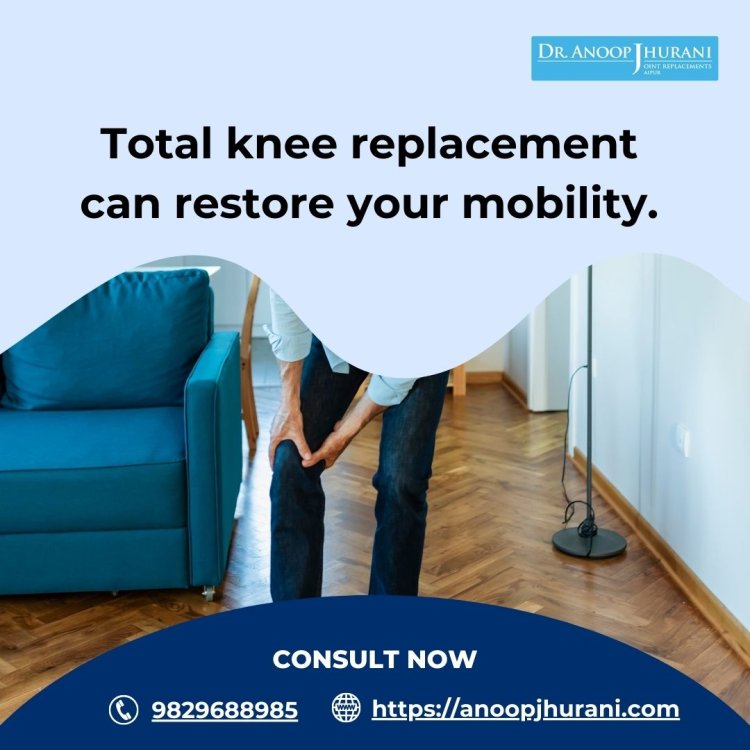Total Knee Replacement Surgery
Get better alignment and balance with total knee replacement surgery in Jaipur, by the most experienced surgeon.
Share this Post to earn Money ( Upto ₹100 per 1000 Views )

Dr. Jhurani is a well-trained, fully qualified, and experienced doctor in knee & hip replacement surgery in Jaipur, India. He has built a department at Fortis Escorts Hospital, Jaipur of national reputation and is well known for outstanding patient care, Knee and Hip Replacement Surgical Outcomes, academics & research.
Together with his highly qualified team of total knee replacement doctors and surgeons, Dr. Anoop Jhurani provides robotic total knee replacement in Jaipur, India. To give his patients the best results, he uses advanced technology, such as robotic and computer-assisted techniques, for knee replacement.
Understanding Robotic Total Knee Replacement Surgery
Traditional total knee replacement surgery has proven to be highly effective in alleviating pain and restoring mobility for individuals suffering from severe knee joint damage due to conditions like osteoarthritis. However, robotic technology is taking this procedure to the next level by enhancing precision and personalization.
Robotic total knee replacement involves the use of a surgical robot in conjunction with 3D imaging and computerized planning. The procedure begins with the creation of a patient-specific 3D model of the knee joint. This model aids surgeons in planning the surgery with unparalleled accuracy, allowing for precise implant positioning and alignment.
The Role of Robotic Technology
1. Enhanced Precision: Robotic systems use real-time feedback and data to assist surgeons in achieving a higher degree of accuracy during bone cuts and implant placement. This minimizes the risk of errors and promotes better alignment, which is crucial for the long-term success of the implant.
2. Personalized Approach: Every patient's anatomy is unique, and robotic technology enables a personalized approach to knee replacement surgery. Surgeons can tailor the procedure according to the patient's specific needs, ensuring optimal fit and alignment of the implant.
3. Real-time Adjustments: During surgery, the robotic system provides real-time information and allows surgeons to make minute adjustments based on the patient's anatomy and the dynamic conditions of the joint. This adaptability enhances the overall surgical experience.
Benefits for Patients
1. Faster Recovery: Precise implant alignment can contribute to more natural joint movement and reduced wear and tear. This, in turn, can lead to a quicker recovery and rehabilitation process.
2. Improved Longevity: Accurate alignment and proper fit of the implant can potentially extend the lifespan of the artificial joint, reducing the likelihood of revision surgeries in the future.
3. Minimized Pain and Discomfort: The precise nature of robotic surgery can lead to less tissue disruption and trauma, resulting in reduced postoperative pain and discomfort.
Conclusion
Robotic total knee replacement surgery stands at the forefront of medical innovation, ushering in a new era of precision, personalization, and improved patient outcomes. As technology continues to evolve, we can expect further refinements in robotic systems, making them even more integral to the field of orthopedics. With faster recovery times, enhanced implant longevity, and reduced postoperative discomfort, this revolutionary approach holds the potential to significantly improve the quality of life for countless individuals suffering from knee joint issues.















